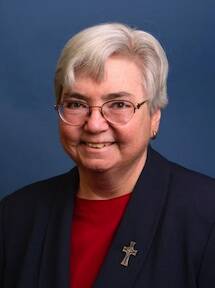About 190 men and women religious professed perpetual vows in 2014. This class of 2014 includes respondents to an annual survey conducted for the U.S. bishops’ Secretariat of Clergy, Consecrated Life and Vocations by the Georgetown University-based Center for Applied Research in the Apostolate, known as CARA.
Survey responses came from 77 women and 41 men. Some of the men may be on their way to ordination to the priesthood. Those who replied represent 62 percent of the potential respondents. In another survey, 62 percent would be considered a great response. For this research, it disappoints.
There is good news and bad news for those concerned about the future of the U.S. Catholic Church.
The good news first. Catholic schools affect vocational choices. Data show that Catholic school attendees are more likely to consider a religious vocation. About 42 percent of this class attended a Catholic school. The survey shows a preponderance of Caucasians in the class of 2014 and a smaller number of Hispanics. CARA reports that “one in seven (15 percent) of the Profession Class of 2014 identifies as Hispanic/Latino(a).” Yet the church in the United States is far more than 15 percent Hispanic.
The survey shows older people going into religious life. The average age is 37, and half are age 34 or younger. The youngest is 24, and the oldest is 64. They are well educated. Eighteen percent earned a graduate degree before entering their religious institute. There were 68 percent who entered with a bachelor’s degree (61 percent for women and 80 percent for men.)
The new class has other significant background factors. “Nearly all responding religious (88 percent) have work experience prior to entering their religious institute,” CARA reports. “Of those who were employed, a quarter (27 percent) were employed part-time, and just over three in five (61 percent) were employed full-time. Women religious are more likely than men to have been employed in health care, while men religious are more likely than women to have been employed in business and education.”
Parish involvement influences the call to religious life. CARA notes that “many responding religious were active in parish life before entering religious institutes. Four in 10 (42 percent) participated in youth ministry or youth groups. Almost a third participated in Catholic campus ministry or a Newman Center. One in five participated in World Youth Day and/or in a young adult ministry or group.”
CARA also noted that “almost nine in 10 (88 percent) had ministry experience before entering their religious institute, most commonly as lector (50 percent) followed by ministry in faith formation (47 percent). Four in 10 served in music ministry, and over one-third as extraordinary ministers of Communion or as an altar server. Over one-quarter served in a social service ministry, and one in 10 taught in a Catholic school or served in hospital or prison ministry.”
A key concern now is the lack of Hispanic leaders in a church that is becoming increasingly Hispanic. Young Hispanics need to see their own people in leadership. Hispanic adults need peers to whom they can relate in parish life. Yet two-thirds of this class are Caucasian. One in seven identifies as Asian, and those born outside the United States come primarily from the Philippines and Vietnam.
New vocations speak about the future of the Catholic Church. Sadly, of all who responded to the survey, Hispanic or otherwise, CARA said that “58 percent report that they were discouraged from considering a vocation by one or more persons.” Therein lies a challenge for all Catholics.
Today it is critical to pay attention to our young, especially Hispanics, particularly the women, who hold an important place in the Hispanic community. Hence a significant question: How do we attract more Hispanics, especially women, into religious communities? One step would be to attract Hispanics to Catholic schools. Another would be to draw Hispanic men and women, especially young ones, to various ministries, including those of lector, altar server and Communion minister. We need to make the presence of Hispanics in our church attractive and obvious to all.








